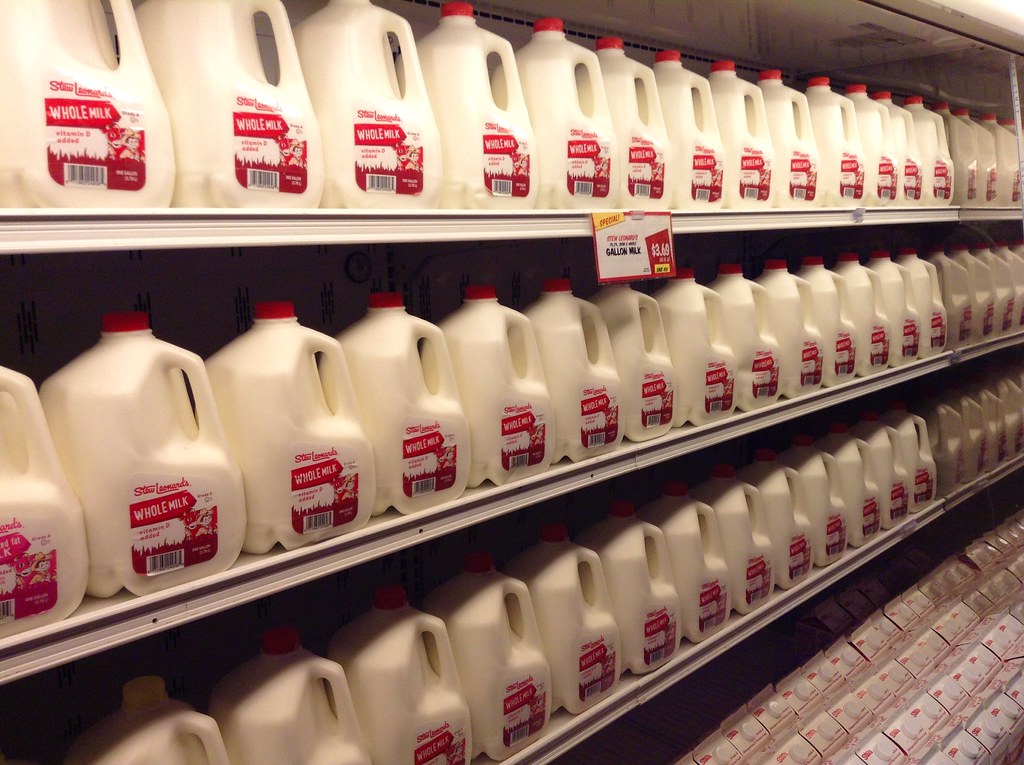Have you ever sipped milk and wondered what it tasted like? It is a beverage that has been a mainstay of diets across all cultures for ages and is cherished for its health benefits and adaptability. But you’re not alone if you’ve ever tasted a mild sweetness that lingered on your palate after consuming a glass of milk.
Although milk doesn’t naturally have a sweet taste, it does contain a natural sugar called lactose, which gives it a mild sweetness. Lactose, a carbohydrate made up of molecules of galactose and glucose, adds to the overall flavour of milk. In contrast to other sugary foods, milk has a very mild sweetness.
Depending on a person’s taste sensitivity and preferences, the way they perceive sweetness might also differ from one person to the next. While milk may not be as sweet as a sweet treat, its subtle sweetness contributes to a better overall flavour and makes it a useful element in a variety of culinary creations.

Does Milk from Different Animals Have Different Levels of Sweetness?
Because different animals’ lactose contents and general compositions differ, milk from different animals can have varying degrees of sweetness. The type of animal, their nutrition, their genetics, and the techniques of processing all have an impact on how sweet milk is. Here are a few instances of how various animals’ milk sweetness can vary:
- Cow’s Milk: A typical and extensively used type of milk is cow’s milk. It tastes delicate and faintly sweet and contains lactose.
- Goat’s Milk: Many people believe that goat milk tastes a little bit sweeter than cow milk. Even though there may not be much of a sweetness difference, some individuals think goat’s milk has a stronger sweetness.
- Sheep’s Milk: Another type of milk with a unique flavour profile is sheep’s milk. Sheep’s milk may taste sweeter to some people than cow’s milk while it may taste creamier and richer to others.
- Buffalo Milk: In some areas, buffalo milk is frequently consumed and has a higher fat content than cow’s milk. This larger fat level can alter how sweet something tastes and make it taste creamier.
- Camel Milk: Many civilisations throughout the world consume camel milk, which is renowned for its distinctive makeup. It is frequently referred to as having a softer, less sweet flavour and has somewhat less lactose than cow’s milk.
- Mare’s Milk: Some cultures drink mare’s milk, which is thought to taste sweeter than cow’s milk because of its higher sugar content.
It’s crucial to remember that everyone has a different sense of taste, and that processing, freshness, and regional differences can all affect how sweet milk is perceived. Additionally, the sweetness of lactose can interact with the presence of other substances, such as fats, proteins, and minerals, changing the milk’s overall flavour profile.

Does pasteurization effect the sweetness of milk?
Milk sweetness can be affected by pasteurisation, albeit the effect is typically minimal. Heat treatment known as pasteurisation is used to destroy germs and dangerous bacteria in milk while also prolonging the shelf life of the product. High-temperature short-time (HTST) and low-temperature long-time (LTLT) pasteurisation are the two primary techniques. Both processes require heating the milk to a particular temperature, maintaining it there for a specific amount of time, and then quickly cooling it.
Some enzymatic processes that can happen during pasteurisation may help to slightly alter the taste and sweetness of milk. Heat can partially inactivate the lactase enzyme, which converts lactose into the simpler sugars (glucose and galactose). As a result, there might be a little decrease in the conversion of lactose to simpler sugars, which might have an impact on how sweet milk is perceived to be.
However, pasteurisation usually has a minor effect on milk’s taste, and most customers might not even notice it. The general flavour profile of milk is influenced more by other variables, like the breed of cows, their nutrition, and processing techniques.
It’s important to note that the flavour of milk can be more noticeably affected by ultra-high-temperature (UHT) pasteurisation, which entails heating milk to a higher temperature for a shorter amount of time. Compared to conventionally pasteurised milk, UHT-treated milk may have a mildly altered flavour, which some customers may mistake for a change in sweetness.

Is Lactose-Free Milk Sweet?
Regular milk is naturally less sweet than lactose-free milk. The natural sugar lactose, which is present in ordinary milk, is what gives milk its sweetness. Enzymatic hydrolysis is a mechanism that converts lactose into its component sugars, glucose and galactose, to provide lactose-free milk. As a result of this procedure, lactose is eliminated, making milk more easily digestible for those who are lactose intolerant.
Since glucose and galactose are both sweeter than lactose as a result of this enzymatic breakdown, lactose-free milk may taste a little bit sweeter than conventional milk. Any increase in sweetness, though, is often slight and may not be apparent to everyone. Additionally, depending on individual taste sensitivity, the sense of sweetness might change from person to person.
It’s important to keep in mind that some commercial lactose-free milk products could have additional sweeteners like sucrose or other sugar replacements to improve the flavour. These additives can help make a flavour sweeter, although they are different from lactose’s inherent sweetness.
Relevant Articles
Can You Put Salt In Chocolate Milk?

Comments are closed